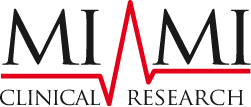Safety and Efficacy
Why Safety and Efficacy Matter
In the world of medicine, safety and efficacy are two non-negotiable elements in the evaluation of any new drug or treatment. These criteria are vital because they directly impact patient health and determine whether a new therapy should be introduced to the public.


Defining Safety and Efficacy
- Safety refers to the absence of harmful side effects or complications from a drug or treatment. It addresses how well the body tolerates the substance, even in vulnerable populations such as children, the elderly, or those with chronic illnesses.
- Efficacy refers to the ability of the drug to produce the desired therapeutic effect under controlled conditions. It answers the question: Does the treatment work as intended?
Both factors are assessed continuously throughout the drug development process. A drug that is safe but not effective is of no use. Similarly, a highly effective drug that causes severe side effects is unlikely to be approved.
Impact on Public Trust
Public trust in medicine relies heavily on the assurance that new treatments have been thoroughly evaluated for safety and effectiveness. Any lapse in this evaluation process can result in widespread harm and loss of confidence in the healthcare system.
Safety and efficacy are not just scientific benchmarks—they’re essential pillars of ethical responsibility in clinical research and patient care.


Importance to Regulatory Approval
Regulatory authorities such as the FDA or EMA will not approve a drug unless it meets minimum safety and efficacy standards. They consider:
- The severity of the condition the drug is meant to treat
- The availability of existing treatments
- The potential benefits of the new therapy
- The severity and frequency of side effects
If the benefits outweigh the risks, the drug may be approved—with or without additional monitoring requirements.
Assessment in Clinical Trials
In clinical trials, safety is the primary focus during Phase I. Participants are closely monitored to detect any adverse reactions, and dosage levels are adjusted accordingly. In Phases II and III, researchers evaluate both safety and efficacy using larger and more diverse participant groups.
Data is collected through medical assessments, lab tests, questionnaires, and reports from healthcare providers. Statistical analysis is applied to understand the outcomes and determine the benefit-risk balance.


